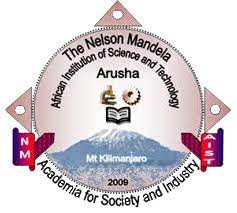Executive summary
The concept of pastoralism is continuously changing in different parts of Sub-saharan Africa. In East Africa, for instance, there has been an increasing number of communities that are in transition between true pastoralism and agro-pastoralism. Greater richness of livestock resources in some areas compared to others create an ideal environment for movements, which is driven by a need to ensure livestock survival (e.g. grazing and watering areas). However, insufficient resource availability to support increasing livestock population numbers for countries such Tanzania, has been the biggest constraint to productivity and performance. These changes have mostly been attributed to reduced access to rangeland grazing and water particularly, in extreme weather condition such as drought. Pastoralists have been forced to adapt their migration patterns as a direct response to these challenges, to ensure livestock survival and livelihood. Hence, understanding these migration dynamics is crucial first step towards the development of a sustainable livestock system.
Currently, there is a major gap in information regarding livestock movement, availability of resources, and how their resources have been used, despite their importance to support agriculture sustainability in resource-poor settings. Therefore, this project aimed at collecting detailed information on locations and relative availability of key livestock resources (e.g. pasture and water) across seasons, and a comprehensive knowledge of livestock mobility patterns including routes. The data collected support the development community-led land use plans that will allow better management of resources by developing good strategies to support pastoralist and also prevent conflicts that arise between livestock keepers and farmers.
In this study, we used a combination of community participatory mapping and global position system (GPS) loggers to investigate seasonal livestock migration patterns and describe how the information can be used to improve livestock production. We mapped livestock resources (e.g., grazing, water and dips points) and gathered information that explain mobility patterns and migration corridors that might be associated to seasons (e.g., dry / wet season), for all villages (n=380) across four districts (Karatu, Longido, Ngorongoro and Monduli) in northern Tanzania. Additional data on fine-scale movement events were also collected using GPS collaring of selected herds, which provided an in-depth information on individual herd migration history and resource use patterns.
Our analyses suggest widespread movement events and large scale migration to specific areas (i.e. locations of early rainfall and high crop residues), which resulted in an extensive mixing of livestock and conflicts in some cases. Nonetheless, villages with locally enforceable land-use plans appear to have less conflicts. We also observed that seasonal migration patterns depend on the herd size and the level of crop production. For example, migration from permanent boma usually begins with larger herds in early wet season, and pastoralist villages that engage in crop production, return migrating herds back to the permanent boma during dry season to feed on crop residue. We demonstrate widespread movements and contacts between village livestock herds that are influenced by seasons, type of production systems and herd size.
Our findings suggest location and period of greater contacts, which is an important consideration for disease control programmes and where support infrastructure could be provided to improve livestock production. For example, building more dips and water holes will reduce contacts and disease spread, and consequently improve livestock health. Our telemetry data from GPS collared herds, also identify the major pastoral migration routes between northern Tanzania southern Kenya, as well as between regions in Tanzania and locations where support infrastructures could be provided to improve livestock management.
The Team and partners
The Nelson Mandela African Institution for Science and Technology (NM-AIST)
This project was hosted at NM-AIST, located at Arusha Tanzania, under the supervision of Prof. Gabriel Shirima. NM-AIST was also responsible for overseeing the implementation of the project.

Lacuna Fund
We are grateful to the Lacuna Funds. They have enabling this project to address one of the world's most pressing challenges.

University of Hohenheim
Prof. Mizeck Chagunda (University of Hohenheim),
has contributed valuable expertise to the project by providing insights into the mapping of farmers'
behaviors, among other factors. This has been crucial to the success of the project.

University of Glasgow
Dr. Divine Ekwem and Prof. Tiziana Lembo, along with their team in Glasgow, have played a vital role in developing protocols for mapping livestock movements and assessing disease risks using participatory methods and GPS collars. Additionally, they have created a framework for analyzing geospatial data that supports both livestock health and production. Their expertise in these areas has been essential to the success of the project.

NOTTECH Company Limited
The NOTTECH team, led by Dr. Gladness Mwanga, has contributed to software development, mapping and digitizing data, and deploying digital platforms for guidance and support in data collection. They have launched data for public sharing, ensuring efficient data management and analysis, and their contributions have been critical to the project's success.

Arusha Districts
The research required collaborating closely with district councils including Karatu, Longido, Monduli, and Ngorongoro district. To gather information about the villages and coordinate with other members, important participants such as the village chairman, sub-village leaders, pastoralist resources committee, and veterinary officers were also involved.
